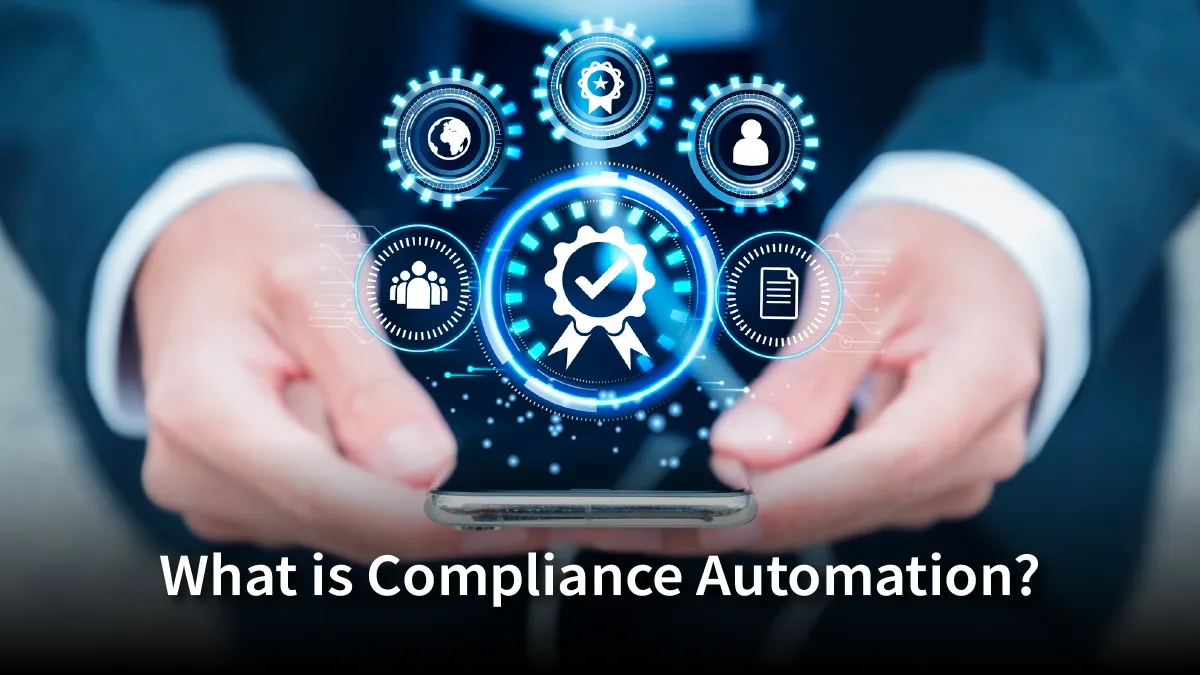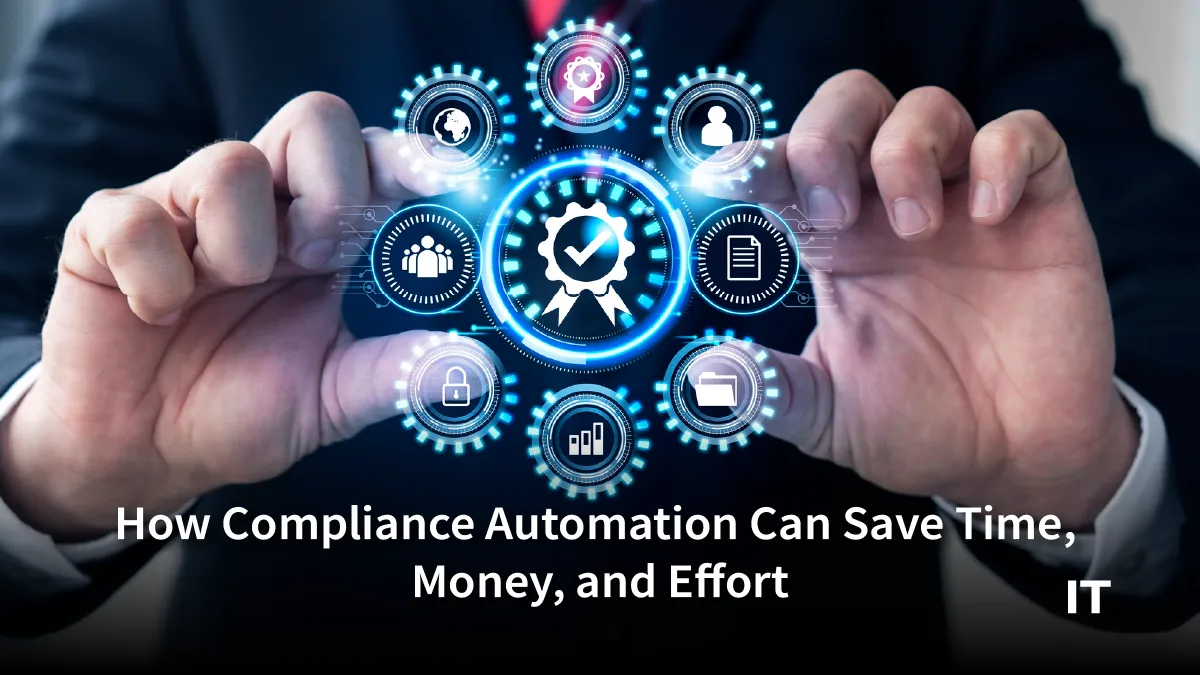What if staying compliant with industry regulations could be as simple as pressing a button? In today’s fast-paced business landscape, regulatory compliance is more than just a necessity—it’s a cornerstone of trust and operational success. Yet, achieving and maintaining compliance can often feel like a time-consuming, resource-draining task. This is where compliance automation steps in, revolutionizing the way businesses navigate complex regulatory frameworks.
By leveraging advanced technologies like AI, machine learning, and automated workflows, compliance automation simplifies continuous monitoring, reporting, and adherence to legal requirements. It minimizes manual effort, reduces errors, and ensures organizations stay ahead of ever-changing compliance demands.
Curious to know how compliance automation can transform your business? Let’s dive in and explore the key benefits, tools, and strategies to streamline compliance in the digital era.
What is Compliance Automation?
 Compliance automation is the practice of streamlining different industry-relevant compliance procedures with specialized software solutions. Without requiring constant attention from you, such software monitors your internal systems, procedures, and controls to ensure compliance with relevant laws, standards, and detailed rules.
Compliance automation is the practice of streamlining different industry-relevant compliance procedures with specialized software solutions. Without requiring constant attention from you, such software monitors your internal systems, procedures, and controls to ensure compliance with relevant laws, standards, and detailed rules.
Automation software simplifies a number of key areas, including:
- Record-keeping and evidence collection
- Risk assessment computations
- Reports about compliance
- Due diligence by suppliers
- Controls testing
- Examining complaints or non-compliance on a bigger scale
Automation software’s ultimate objective is to use cutting-edge technology to continuously check controls, free up time for compliance teams, and lower the chance of oversight brought on by human labor and compliance fatigue. When automation is done right, it increases operational productivity and enables continual compliance. Process automation is also listed as one of the primary factors influencing compliance budget expenditures for the next two years in the 2023 KPMG Chief Compliance Officer Survey.
Benefits of Compliance Automation
 In an Accenture compliance risk research, 93% of participants concurred that cloud and AI compliance technologies and programs eliminate human mistake, automate manual activities, and prove to be more successful and efficient.
In an Accenture compliance risk research, 93% of participants concurred that cloud and AI compliance technologies and programs eliminate human mistake, automate manual activities, and prove to be more successful and efficient.
There is more to automating regulatory compliance than merely cutting down on manual labor. It’s about risk reduction and ensuring that your security requirements are satisfied.
The following are a few advantages of automated compliance management:
● Facilitates Cross-Platform Integration
It may be more difficult to locate and monitor essential information if it is dispersed throughout software and systems. However, compliance automation technologies manage data from all of your systems simultaneously by integrating with several platforms. To handle regulatory obligations without bouncing back and forth, they integrate with mobile device management systems, vulnerability monitoring tools, and background check providers.
● Simplifies Process Efficiency
Automation makes it possible for processes like vulnerability scanning and report generation to operate smoothly in the background. As a result, there will be a lower chance of human error and manual data entry. Additionally, automation tools ensure consistency by carrying out each step with the highest level of accuracy.
● Automatic Asset Inventory Creation
A real-time inventory of your software assets, such as operating systems and cloud services, can be created and maintained with automation tools. During audits, it’s simpler to determine which require attention, keeping you organized when regulators visit.
● Allows for Continuous Monitoring
Around-the-clock, these systems automatically look for threats and notify you when they do. In this manner, you avoid unforeseen hassles by resolving problems before they become more serious.
The move to automation lowers assessment costs and timescales, according to a new CoalFire-commissioned research of IT security leaders. Automating evidence collecting, according to 62% of surveyed businesses, reduces the total effect on compliance.
Also Read: The Security Playbook: Key Strategies for Software Supply Chain Security
How Does Compliance Automation Work?
Compliance automation operates by automating compliance checks, notifying teams when non-compliance is detected, and connecting with essential processes including cloud service providers, HRMS, and collaboration. Additionally, it facilitates the collection of compliance evidence and its presentation for auditors.
Automated compliance management can find vulnerabilities and gaps in compliance by automatically scanning infrastructure and systems. Automation can verify that software updates or security patches have been applied appropriately in order to comply with policies, for instance. To make sure the least privilege and separation of duties rules are observed, it can also keep an eye on user access and behavior.
You can address security vulnerabilities by using compliance automation’s built-in remediation features. If the necessary security procedures are not put in place, this can detect sensitive data that might breach laws like General Data Protection Regulation (GDPR) or ISO 27001. The organization-wide visibility into compliance status is made possible by the automated reporting.
The overall goal of automating a compliance process is to lessen the amount of work that employees must do to comply. It guarantees that procedures and systems follow applicable laws and internal guidelines. Teams working on compliance and security can now concentrate on higher-level planning.
Top 5 Compliance Automation Tools
Data from several sources will be gathered and mapped to compliance requirements via an effective compliance automation solution. Additionally, it will do vulnerability scans and risk assessments and generate reports on compliance gaps so that companies may make well-informed decisions.
The top compliance automation tools with the best features are:
1. Drata
Drata is a centralized compliance automation tool that keeps track of your compliance processes and prepares you for audits. It provides a strong suite of solutions to guarantee ongoing compliance, saving businesses time and lowering the possibility of mistakes.
Drata provides a high degree of control over compliance measures. Controls can be customized to fit your unique requirements and risk profile. Among the best features of the platform are:
- Automated Evidence Gathering: Drata minimizes the amount of human labor necessary and guarantees current documentation by automating the gathering of evidence needed for compliance.
- Automated Workflows: It streamlines time-consuming UAR-related tasks. By collecting user access data from all linked apps, it can do away with manual real-time data collection and save a significant amount of time.
- Continuous Control Monitoring: To assist you always stay in compliance, the platform keeps an eye on your security controls and provides real-time warnings and insights.
2. Vanta
Vanta is a platform that uses advanced analytics and artificial intelligence to monitor your security procedures and compliance issues. It provides a comprehensive picture of your risks and streamlines the audit procedure.
It speeds up the process of achieving compliance with many standards, including ISO 27001, SOC 2, and others. The best features of Vanta are:
- Customizable Compliance Frameworks: The platform may be tailored to your organization’s unique requirements and supports a number of compliance standards. It offers scalability and flexibility as your compliance needs change.
- Vendor Risk Management: It includes tools for evaluating your third-party providers’ compliance. This feature lowers total risk by assisting you in making sure that your whole supply chain upholds the same strict security and compliance standards as your company.
- Automated Gap Analysis: By continuously evaluating your systems and controls, Vanta finds gaps in your present compliance posture.
3. Sprinto
With integrated security programs, policies, controls, and task workflows to speed up compliance and audits, Sprinto is among the top automation solutions for Governance, Risk, and Compliance (GRC). It uses a real-time compliance dashboard to continuously monitor your tasks, controls, and assets.
ISO, HIPAA, SOC 2, CIS, NIST, CSA, FCRA, GDPR, CCPA, and other frameworks are supported by Sprinto. With more than 200 integrations, it also features a “Bring your own framework” structure to meet your compliance requirements.
The platform’s adaptable and adjustable features make it easy to scale compliance initiatives. Among Sprinto’s best features are:
- Automated notifications and actions: The dashboard displays the compliance status of rule-based entity-level checks. It features tiered processes that notify you via Slack or email and recommend actions in the event of a control failure.
- Integrated audit dashboard: To prepare your system for an audit, Sprinto automated the gathering of evidence. Both you and the auditor may effectively gather input and analyze evidence using its single audit dashboard.
- Trust center pages: Sharing your security posture and framework compliance is now easier than ever thanks to Sprinto’s trust center. It features considerable logs, controlled access, and extensive customization.
4. Scrut
Scrut is an advanced compliance automation tool that streamlines the compliance process to guarantee a smooth audit experience by tracking and gathering proof of your company’s security policies. Here’s a detailed look at how Scrut can improve your compliance efforts:
- Unified Compliance Management: Scrut unifies, on a single platform, ISO 27001, SOC 2, GDPR, PCI DSS, CCPA, and HIPAA compliance. Managing several compliance requirements is made easier by this consolidation, guaranteeing that your company complies with all applicable laws with ease.
- Real-Time Monitoring and Updates: This feature makes sure that all security controls are up and running in real-time. With this function, your company can stay in compliance all the time and take care of any possible problems right away.
- Automated Evidence Mapping: By removing repetitive and unnecessary work, Scrut automatically connects gathered evidence to the relevant provisions across several standards. This automation lessens the human labor required of your compliance team by guaranteeing that your compliance documentation is correct and updated.
- Custom Reporting: Scrut’s custom report creation feature allows you to track and evaluate vendor compliance at any moment, and you may share these reports with stakeholders. These reports provide important information about your compliance status and support organizational openness.
- Wide-ranging Monitoring: It keeps an eye on your real-time data, apps, and infrastructure in multi-cloud and hybrid settings. Your IT ecosystem’s compliance with internal SOPs and infosec requirements is guaranteed by this comprehensive monitoring capabilities.
- Single- Window Dashboard: It offers a comprehensive picture of your company’s compliance position through its single-window dashboard, which compiles all compliance-related operations. By consolidating and simplifying all compliance-related duties in one location, this tool streamlines compliance management.
5. Hyperproof
Hyperproof is one of the comprehensive security assurance and compliance automation systems designed to help companies effectively and successfully meet legal requirements. Hyperproof supports numerous compliance frameworks, including ISO 27001, SOC 2, NIST 800-53, NIST Privacy, NIST CSF, SOX, PCI, and many more. Because of this flexibility, you may begin with any compliance framework that best fits the needs of your company and grow it as needed. Some of the key feature include:
- All-inclusive Compliance Management: Hyperproof offers a strong platform that enables businesses to oversee adherence to different legal requirements. It guarantees that your company keeps ahead of regulatory obligations by providing an organized method for standardizing, automating, and coordinating compliance tasks.
- Custom Framework Management: It lets you upload and manage bespoke compliance frameworks in addition to pre-built ones. Even the most unusual regulatory requirements can be easily included into your compliance activities thanks to this capability.
- Automation of Compliance Tasks: Hyperproof greatly minimizes the amount of manual labor involved in evidence management, control mapping, and control testing. The platform guarantees accuracy, saves time, and lowers the possibility of human error by automating these operations.
- Real-Time Audit Preparation: You can effectively prepare for audits thanks to the platform’s real-time features. By regularly updating and maintaining your compliance status, Hyperproof makes sure you are never caught off guard during an audit.
- Centralized Evidence Management: It offers a single location to store and manage all evidence pertaining to compliance. The process of gathering, organizing, and retrieving evidence is streamlined by this centralization, which facilitates compliance demonstration during audits.
How to Pick the Best Compliance Automation System for Your Needs
Selecting the best compliance automation software is essential for risk reduction and efficient regulatory requirement management. Here are some tips for navigating the selection process.
Recognize your Requirements for Compliance
Determine which particular rules and guidelines apply to your business and operations. Assess your present level of compliance and pinpoint areas that require enhancement.
Establish Your Needs
Establish the scope of the compliance tasks you must oversee, ranging from financial reporting to data protection. Think about how an automation solution will need to work with your current systems and procedures and expand with your company over time.
Research and Select Suppliers
Seek out alternatives that are highly regarded and suggested in your sector. Take into account the vendor’s standing, durability, and support capacity.
Examine Capabilities and Features
Make sure the solution offers tools for automating repetitive processes, such as gathering and reporting data. The solution should have an intuitive UI to make it easy for your staff to adopt it and be adaptable to your unique compliance requirements. Strong reporting features are essential for tracking and proving adherence to regulations. To protect sensitive data, make sure the solution has robust security measures in place.
Consider the Overall Cost of Ownership
Recognize the features and costs of your chosen solution, including whether it is a one-time purchase or a subscription. Take into account how much it will cost and how much work it will take to implement the solution, as well as the prices and quality of the ongoing support and maintenance.
Request Trials and Demonstrations
To observe how the solution functions and how it may be tailored to your unique needs, always ask for demos. To test the solution in your setting, if at all possible, use trial periods.
Check Reviews and References
Seek for customer reviews and testimonials, especially from those with comparable compliance requirements or in related businesses. Examine case studies to see how other organizations have benefited from the solution.
Assess the Support and Implementation Systems
Recognize how the vendor will assist you during the implementation stage. Verify that the employees have received sufficient training from the vendor, and after the installation is complete, assess the quality and accessibility of ongoing customer assistance.
Evaluate Compliance with your Needs
Make a list of your precise needs and evaluate how well each option meets them.
Choose a Course of Action
Examine each solution’s benefits and drawbacks in light of your needs and limitations; take into account features, cost, customer support, and other factors. To ensure that the selected solution satisfies everyone’s needs, include important stakeholders in the decision-making process.
Make Plans for the Future
Verify that the solution will adapt to changing regulations and technological advancements. Create a feedback system so that you may evaluate the solution’s efficacy on a regular basis and make necessary modifications.
You may choose a compliance automation system that not only fits your demands now but also grows with your company and adapts to rules by approaching the evaluation process methodically.
Concluding Thoughts
Compliance automation is no longer a luxury—it’s a necessity for businesses looking to thrive in a heavily regulated and competitive world. By automating repetitive compliance tasks, organizations can improve accuracy, enhance operational efficiency, and stay ahead of regulatory changes with ease. Beyond the immediate benefits of risk mitigation and cost savings, compliance automation helps businesses focus on what truly matters: growth and innovation.
As regulations continue to evolve, adopting a compliance automation platform is the smartest way to future-proof your organization. Start your journey today and unlock the full potential of automated compliance to drive success in your business. Let technology take care of compliance, so you can focus on achieving your strategic goals.

































